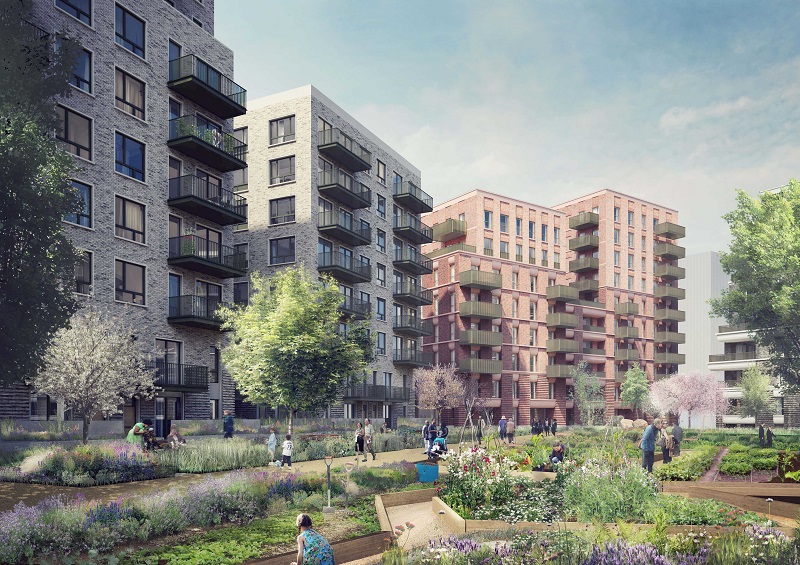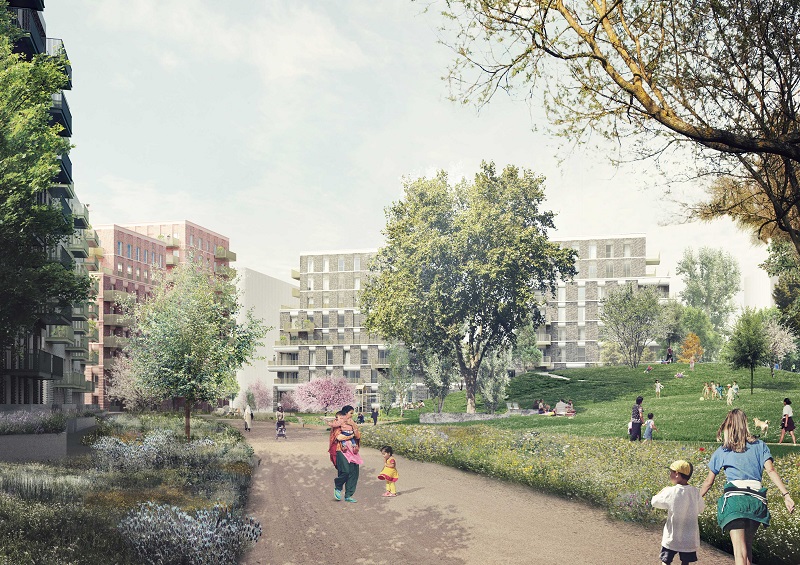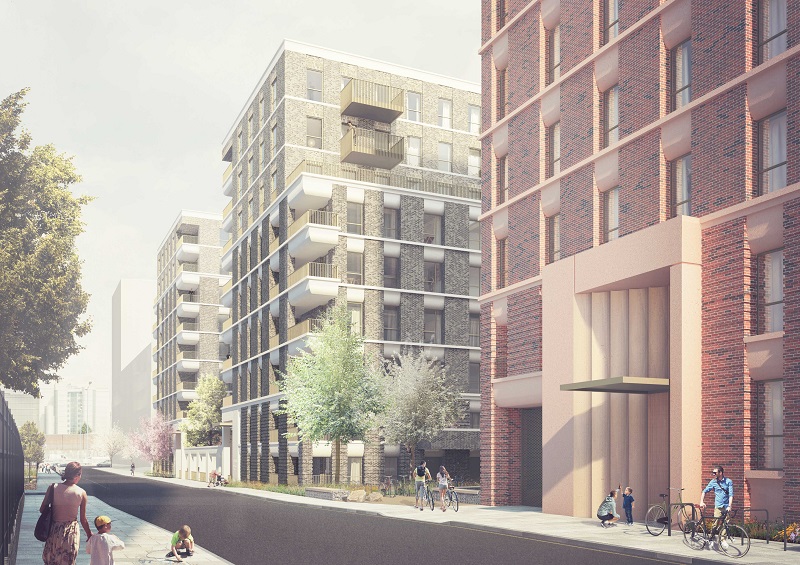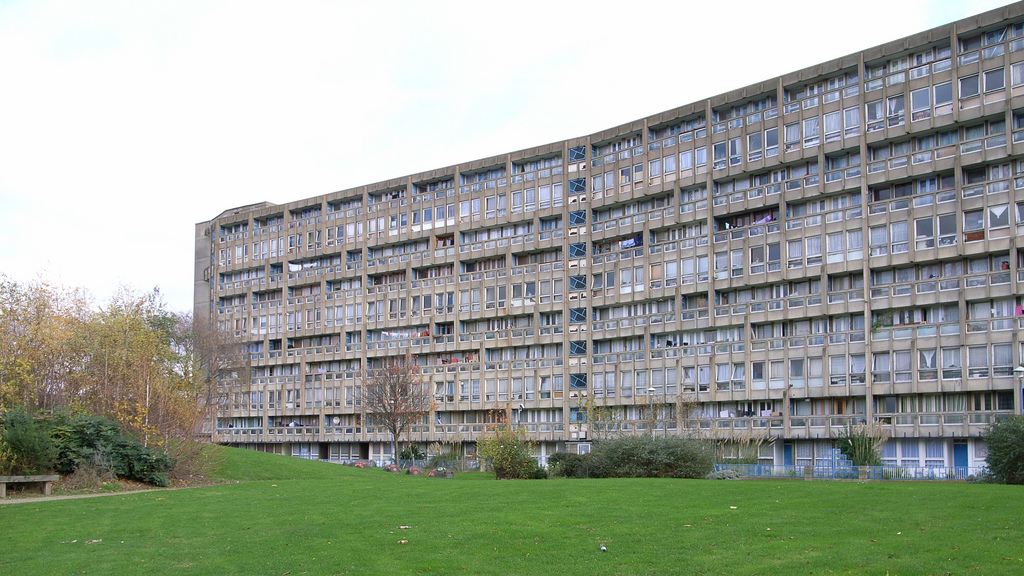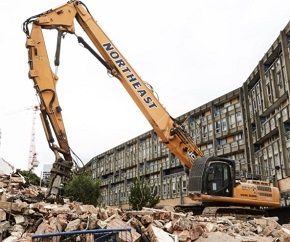Robin Hood Gardens redevelopment
In August 2016, architects Haworth Tompkins and Metropolitan Workshop revealed their designs for housing to replace the Brutalist estate Robin Hood Gardens.
Swan Housing Association submitted a planning application to Tower Hamlets for Phase 2 of the Blackwall Reach Regeneration Project in Poplar, east London.
The project will include 268 new homes across four buildings that will replace the iconic 1970s estate originally designed by Alison and Peter Smithson.
The scheme will retain the original central park and mound within Robin Hood Gardens, a large public space shielded from the surrounding roads. An unusual feature in this densely built part of London, the park is appreciated by local residents and so the design retains this space in its entirety.
The blocks are designed to ‘share a common architectural language’, but will be different in style and expression, creating two distinct architectural ‘quarters’ around the central space.
The news will come as a disappointment to campaigners who had fought to save Robin Hood Gardens on the grounds of their unique heritage, being the only Smithson housing estate, with its ‘streets in the sky’ design concept, to have been realised.
A petition to have the estate listed was signed by architects such as Richard Rogers, Toyo Ito and the late Zaha Hadid.
Toby Johnson, a director at Haworth Tompkins, said: "We respect the legacy of the Smithsons and have been all too aware of the intellectual challenge involved in working on Blackwall Reach.”
Phase 2 is part of a large regeneration project, consisting of five phases, which will transform a key area of the borough, adjacent to the Blackwall Tunnel, replacing 252 homes with a total of 1575 new homes, commercial premises and community facilities. The entire masterplan will be delivered over the next decade, with the first phase already completed in 2015.
In August 2017, demolition officially began, bringing to an end any chance of a last-minute preservation effort for the Brutalist icon.
In November 2017, it was announced that London's Victoria & Albert Museum had salvaged and acquired two sections of the housing estate. The parts of the facade taken are almost 9 m in height and 5.5 m wide, representing a full section of the repeating pattern of prefabricated concrete that forms the buildings' elevations. The sections also include one of its elevated walkways that were central to the Smithsons' 'streets in the sky' concept.
With the demolition underway, the pieces of the facade are being stacked onsite awaiting removal to the museum's storage facility. The V&A has yet to announce its plans for exhibiting the pieces.
Some of the images and content in this article are courtesy of Swan Housing Group.
[edit] Find out more
[edit] Related articles on Designing Buildings Wiki
Featured articles and news
CIOB report; a blueprint for SDGs and the built environment
Pairing the Sustainable Development Goals with projects.
Latest Build UK Building Safety Regime explainer published
Key elements in one short, now updated document.
UKGBC launch the UK Climate Resilience Roadmap
First guidance of its kind on direct climate impacts for the built environment and how it can adapt.
CLC Health, Safety and Wellbeing Strategy 2025
Launched by the Minister for Industry to look at fatalities on site, improving mental health and other issues.
One of the most impressive Victorian architects. Book review.
Common Assessment Standard now with building safety
New CAS update now includes mandatory building safety questions.
RTPI leader to become new CIOB Chief Executive Officer
Dr Victoria Hills MRTPI, FICE to take over after Caroline Gumble’s departure.
Social and affordable housing, a long term plan for delivery
The “Delivering a Decade of Renewal for Social and Affordable Housing” strategy sets out future path.
A change to adoptive architecture
Effects of global weather warming on architectural detailing, material choice and human interaction.
The proposed publicly owned and backed subsidiary of Homes England, to facilitate new homes.
How big is the problem and what can we do to mitigate the effects?
Overheating guidance and tools for building designers
A number of cool guides to help with the heat.
The UK's Modern Industrial Strategy: A 10 year plan
Previous consultation criticism, current key elements and general support with some persisting reservations.
Building Safety Regulator reforms
New roles, new staff and a new fast track service pave the way for a single construction regulator.
Architectural Technologist CPDs and Communications
CIAT CPD… and how you can do it!
Cooling centres and cool spaces
Managing extreme heat in cities by directing the public to places for heat stress relief and water sources.
Winter gardens: A brief history and warm variations
Extending the season with glass in different forms and terms.
Restoring Great Yarmouth's Winter Gardens
Transforming one of the least sustainable constructions imaginable.






